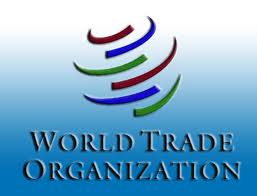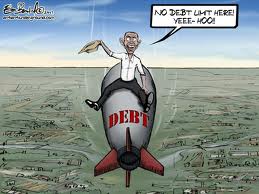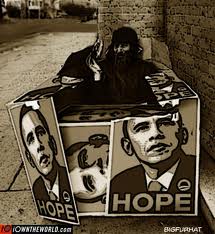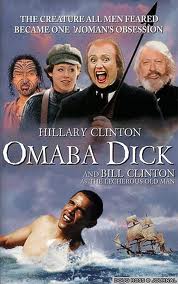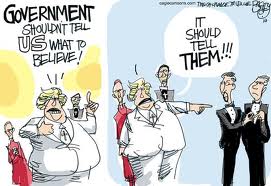By Scott Fullwiler
Solving the debt-ceiling issue via proof platinum coin seigniorage—an idea that began and was nurtured within the MMT ranks, mostly by Joe Firestone and Beowulf (see Joe’s post
here and the numerous links therein)—has gone viral in the blogs and news sources as a viable option to end the debt ceiling crisis. The one thing that naysayers, and even some supporters, instinctively claim, however, is that coin seigniorage would be inflationary or even hyperinflationary. But this is not true!
Let’s begin by noting the most basic point in the proposal (see link above for more details)—a platinum coin or coins would be minted and deposited in the US Mint’s Public Enterprise Fund (PEF) at the Fed, where it would be credited for its (their) full legal tender face value by the Fed. The Treasury would then “sweep” the profits (the difference between the cost to the Mint of producing the coin (s) and face value of the coin(s)) into the Treasury general Account (TGA) at the Federal Reserve. The face value of the coin(s) can be whatever the Mint chooses to stamp on it (them); there is no requirement that the coin(s) weight be related to the face value. So, the coin(s) could be $1 trillion or more, or less if preferred. This is all perfectly legal, as, again, several blogs and news articles have explained. It’s highly unlikely that one would have to worry about the coin(s) being stolen—they would be nothing more than a collector’s item as the extraordinarily high dollar value could never actually be cashed anywhere (who’s going to give you change for $1 trillion?).
So, why won’t coin seigniorage, using very large face value coins, be inflationary? Here are the reasons:
The coin(s) would never circulate among the public. It (they) would always remain on the asset side of the Fed’s balance sheet, and would always rest in a vault at the Fed. Since the platinum coin(s) never circulate(s), minting and depositing the coins at the Fed cannot possibly be inflationary.
Depositing the coin into the Treasury’s account at the Fed will provide the Treasury with an account balance nearly equal to the stamped value of the coin(s), but this is not inflationary, either, for the following reasons.
Coin Seigniorage and Government Spending
1. The Treasury can never legally spend any more than what has been appropriated by Congress. Congress still retains the “power of the purse,” actually the “power of the purse strings.” So, the coin(s) will never add to the government’s spending beyond what has been passed by both houses and signed by the President. There will be no inflation resulting from additional spending, due to coin seigniorage itself, since there won’t be any spending on goods and services not appropriated by Congress. So, as long as Congress doesn’t appropriate spending great enough to be inflationary, there’s no inflation problem, regardless of whether we use coin seigniorage to make the debt ceiling irrelevant.
Coin Seigniorage to Retire Debt Held by the Federal Reserve
2. The balances in the Treasury’s account could simply be used to retire the debt owed to the Fed. As of July 28, this is $1.635 trillion. So, the Mint stamps a coin or coins worth $1.635 trillion, the profits (the difference between the cost of minting and the face value of the coin) end up in the Treasury’s account, and the Treasury then pays down the debt held by the Fed, and then both the balance in the Treasury’s account and the Treasury securities owned by the Fed are debited. The coin replaces the securities on the Fed’s asset side of its balance sheet. The Treasury is now $1.635 trillion under the debt ceiling, but to spend again must receive revenue or issue more Treasury securities to the public (given that the Fed is not legally authorized to provide overdrafts to the Treasury—though some are now questioning this, it’s a separate issue and it’s not clear to me (at least yet) that it could work). Clearly, coin seigniorage has not been inflationary to this point, as there hasn’t even been one penny of new money put into circulation. This option is much like Ron Paul’s proposal—actually identical in terms of the effect on the debt ceiling and the Treasury—except that his proposal would destroy all of the Fed’s capital (and then some), which is a potential problem politically (not the least of which being that Paul himself has previously worried about the Fed being “bankrupt”), though not operationally, and which the Fed is therefore very unlikely to agree to.
Coin Seigniorage to Retire Debt Held by Agencies of the Federal Government
3. In addition to retiring debt held by the Fed, a coin or coins could be minted to retire the more than $4.5 trillion held by trust funds and government agencies. (I will here deal only with the debt held by the trust funds, as this is far and away the largest portion of the national debt held by agencies of the federal government.) Retiring this debt also demonstrates both how silly it is to count the trust funds against the debt ceiling and how the trust funds themselves are simply accounting gimmicks that do not actually “fund” anything in an operational sense. The trust funds are not altogether unlike if I were to promise today to pay for my daughter’s college expenses after she graduates from high school 14 years from now and having this promise show up in my credit reports as actual debt owed. (Some will say that the “promise” to the trust funds has the force of law while mine to my daughter doesn’t; however, the government—since it makes the laws—can choose to renege on this “promise” at any time, or water it down, as the President is currently attempting to do, just as I could tell my daughter next year that I’ll only pay, say, 85% of her college expenses, not 100%.) At any rate, since larger trust funds signal improved prospects for both Social Security and Medicare under current law, it is counterintuitive to count the improved “health” of these programs against the debt ceiling; that is, the larger the trust funds, the “healthier” the programs, the larger the debt counted against the debt ceiling. Go figure.
At any rate, the Treasury could simply mint another $4.5 trillion coin, or just one coin for a bit over $6.1 trillion to cover debt owed to both the Fed and the trust funds. Just as with paying off debt held by the Fed, the coin(s) would not circulate but instead would remain an asset on the Fed’s balance sheet while the Treasury’s account would be credited with the profits. To pay off the trust funds, the Treasury would simply create a special fund or balance separate from its “general” account from which it normally spends—sort of like it did beginning in fall 2008 with the supplemental financing account—that would be balances available for the trust funds to spend from. As such, these balances would replace the debt currently held by the trust funds and others as non-marketable bonds. These balances would not be spent for some time given that current payroll taxes are sufficient to cover spending by Social Security and Medicare for the time being. (Point 6 below explains what happens when the balances are eventually spent.)
The only difference between holding the trust funds as non-marketable securities and holding them as special balances in the Treasury’s account is that the latter would not earn interest. Some might therefore be against using the coin(s) to retire these debts as a result. However, because these debts are simply accounting gimmicks that do not really finance anything, any lost interest due to seigniorage could be more than replaced at any time the Congress wanted to by (a) simply appropriating more balances (which could be paid via coin seigniorage), (b) considering the special account at the Treasury to be a “savings” account that earns interest for the trust funds (which also could be paid via additional coin seigniorage), or (c) simply guaranteeing that the expenses would be covered by general revenues as it already does for parts of Medicare.
As with retiring debt owned by the Fed, retiring debt owned by the trust funds would similarly not be inflationary. The bonds as assets would simply be replaced with one or more coins that would never circulate. Nothing about the actual spending operations or outlays for the programs would change.
So, now we’re up to more than $6 trillion of debt retired via coin seigniorage, and not a chance of inflation yet.
Coin Seigniorage to Retire Debt Held by Private Investors
4.
As with retiring debt owned by the Fed, the Treasury could mint coins, deposit the profits in its account at the Fed, and use balances thereby credited to its account to buy back bonds held by private investors. As I previously
explained, this is the operational equivalent of quantitative easing (QE). This is not inflationary. The purchase of Treasury securities by the Treasury would retire the securities and leave banks holding reserve balances. But,
as I explained in the previous post, “Banks can’t ‘do’ anything with all the extra reserve balances. Loans create deposits—reserve balances don’t finance lending or add any ‘fuel’ to the economy. Banks don’t lend reserve balances except in the federal funds market, and in that case the Fed always provides sufficient quantities to keep the federal funds rate at its target—that’s what it means to set an interest rate target. Widespread belief that reserve balances add ‘fuel’ to bank lending is flawed, as I explained
here over two years ago.”
One should also recognize that all the reserve balances created will necessarily earn the Fed’s target rate unless the Fed desired a 0% overnight rate (since that’s what it would get if it didn’t pay interest). Neoclassical economists almost uniformly believe (from Krugman to Sumner to the Fed’s own economists) that interest on reserve balances makes “base money” and Treasury bills equivalent, which then makes whatever quantity of reserve balances circulates non-inflationary. MMT’ers disagree that interest on reserve balances has this effect, but given most everyone who thinks coin seigniorage would be inflationary subscribes to the (incorrect) neoclassical understanding of the monetary system, this is a necessary point to make—anyone thinking coin seigniorage would be inflationary because it amounts to “printing money” must also disagree with (again, incorrect) standard economics descriptions of the monetary system found in any textbook to be internally consistent.
Furthermore, while non-bank sellers of the Treasury securities would now be holding deposits instead of securities, this is also not inflationary. Again, from my previous post:
“First, sellers of bonds were always able to sell their securities for deposits with or without the Treasury’s intervention given that there are around 20 dealers posting bids at all times. Anyone holding a Treasury Security and desiring to sell it in order to spend more out of current income can do so easily; holders of Treasury Securities are never constrained in spending by the fact that they hold the security instead of a deposit. Further, dealers finance purchases of securities from both the private sector and the Treasury by borrowing in the repo market—that is, via credit creation using securities as collateral. This means there is no ‘taking money from one person to give it to another’ zero sum game when bonds are issued (banks can similarly purchase securities by taking an overdraft in reserve accounts and clearing it at the end of the day in the federal funds market), as what in fact happens is that the existence of the security actually enables more credit creation and is known to regularly facilitate credit creation in money markets that are a multiple of face value. Removing the security from circulation eliminates the ability for it to be leveraged many times over in money markets.”
“Second, the seller of the security now holding a deposit is earning less interest and can convert the deposit to an interest earning balance. Just as one holding a Treasury can easily sell, one holding a deposit can easily find interest earning alternatives. Some make the argument that the security can decline in value and so this is not the same as holding a deposit, but this unwittingly supports my point that holders of deposits aren’t necessarily doing so to spend. Deposits don’t spend themselves, after all.”
“Third, these operations by the Treasury create no new
net financial assets for the non-government sector (and can in fact reduce its net saving by reducing interest paid on the national debt as bonds are replaced by reserve balances earning 0.25%). Any increase in aggregate spending would thereby require the private sector to spend more out of existing income, or to dis-save, as opposed to doing additional spending out of
additional income.
The commonly held view that ‘more money’ necessarily creates spending confuses ‘more money’ with ‘more income.’
QE—whether ‘Fed style’ or ‘Treasury style’—creates the former via an asset swap; on the other hand, a true
helicopter drop would create the latter as it raises the net financial assets of the private sector. Again, ‘money’ doesn’t spend itself. By definition, spending more out of existing income is a
re-leveraging of private sector balance sheets. This is highly unlikely in the current
balance-sheet recession, aside from the fact that QE again does nothing to facilitate more spending or credit creation beyond what is already possible without QE. The exception is that QE may reduce interest rates, particularly if the Fed or (in this case) the Treasury sets a fixed bid and offers to purchase all bonds offered for sale at that price—though this again may not lead to more credit creation in a balance-sheet recession and has the negative effect of reducing the net interest income of the private sector. (As an aside, a key difficulty neoclassical economists are having at the moment is they do not recognize the difference between a balance-sheet recession and their own flawed understanding of Keynes’s
liquidity trap.)”
It is important to remember that using coin seigniorage to retire Treasury securities held by the private sector—because it is the operational equivalent of QE—can only be as inflationary as QE is, and we already know it has not been both in the US and in Japan earlier.
And if the public or policy makers end up unwilling to accept that this would not be inflationary, the Fed could take the additional step of either selling securities from its own balance sheet or issuing its own time deposits to banks, both of which would drain the reserve balances from circulation. The former would effectively be reversing the QE; the latter would also do this while effectively transfer debt from the Treasury’s books to the Fed’s. A combination of the two would be possible, too, if desired. These would not reduce the real inflationary effects of coin seigniorage, in fact, because there are none, but within the neoclassical understanding of the monetary system they would do so. So, again, anyone believing that coin seigniorage would be inflationary if the Treasury uses it to retire debt held by private investors is reasoning in a manner that is either inconsistent with actual monetary operations or inconsistent with the neoclassical textbook understanding of monetary operations.
And now, the entire national debt has been “paid off,” without any inflationary impact whatsoever.
But we don’t need to stop there.
Coin Seigniorage to Precede All Government Spending
5. Coin seigniorage could be used to add balances to the Treasury’s account before it spends. Would this be inflationary? Only in as much as the deficit that might be incurred would be inflationary. This is because, whether or not the Treasury spends via coin seigniorage, either the Treasury or the Fed must issue debt in order for the Fed to achieve its target rate, or the Fed must pay interest on reserve balances. In other words, without coin seigniorage, the Treasury issues securities for every dollar of deficit incurred; with coin seigniorage, the Treasury issues securities, the Fed issues time deposits, or the Fed pays interest on reserve balances for every dollar of deficit incurred. There is no difference, while the alternative, as above, is to allow the federal funds rate to fall to zero. Again, then, using coin seigniorage to go beyond retiring debt and in addition (or instead) use it to finance spending does not add to inflationary pressures besides those already in place as a result of the deficit the government would have incurred anyway.
Note what I did not say here—I did not say that coin seigniorage enables the federal government to increase spending or reduce taxes willy nilly and “just print” its way (or “mint its way,” as the case would be) to larger deficits. Any rise in inflation would be due to Congressional appropriations relative to revenues becoming inflationary rather than the effect of the “full purse” resulting from coin seigniorage. The inflation issue concerns whether “the purse strings” will be monitored and managed by Congress, not whether the purse is full in the first place.
In other words, larger deficits absolutely can be inflationary, just as they can be now—indeed, there’s absolutely no difference, as above—but not because of coin seigniorage; and because of coin seigniorage, even future deficits do not need to count against the debt ceiling.
Coin Seigniorage and Entitlement Spending After Trust Funds Have Been Retired
Finally, regarding the special balances held on behalf of the trust funds in the Treasury’s account . . . what happens when those are spent? Won’t that be inflationary?
6. Again, there is no difference. With a trust fund, the relevant agency presents the Treasury with a non-marketable security and is given legal authority to spend beyond revenues earned by that program; balances are withdrawn from the Treasury’s account to pay beneficiaries.
With balances held in a special fund in the Treasury’s account, the relevant agency informs the Treasury that it desires to draw down its balances and is thereby given legal authority to spend beyond revenues earned by that program; balances are withdrawn from the Treasury’s account to pay beneficiaries.
In either case, whether or not inflation rises depends on the total deficit incurred by the program relative to the deficit incurred by the rest of the government’s spending versus its revenues—the deficit incurred by spending more on entitlements than revenues could conceivably be offset by a surplus for the rest of the government’s budget. Whether there has been coin seigniorage to move the balances held by trust funds in non-marketable securities into a special account within the Treasury’s account at the Fed has nothing to do with the inflationary impact of future spending on entitlements. (Note also, as in point 5, that any deficits incurred via seigniorage will still require the Treasury to issue bonds, the Fed to issue its own debt, or the Fed to pay interest on reserve balances in order to achieve a non-zero federal funds rate target.)
Coin Seigniorage and Lifting the Veil on Real-World Monetary Operations
As I wrote earlier, using coin seigniorage to finance spending lifts the veil on monetary operations to expose their true nature. As MMT’ers have always argued:
“It then would be clear to everyone that the Treasury’s spending is not
operationally constrained by revenues or its ability to sell bonds. It would be obvious that the Treasury spends by crediting the reserve accounts of banks, who in turn credit the deposit accounts of the spending recipients. . . . As MMT’ers have
explained for years (even
decades), the operational purpose of the Treasury’s sale of a bond is merely to aid the Fed’s ability to achieve its overnight target by draining reserve balances created by a deficit.”
Similarly, coin seigniorage to pay off the trust funds and “fund” future entitlement spending demonstrates that the government’s ability to finance these expenditures is never at issue. Instead, it would be clear that the fundamental purpose of taxation is to constrain aggregate spending, not to finance government spending, another fundamental tenet of MMT.
Analytical Mistakes Made by Those Claiming Coin Seigniorage Would Be Inflationary
All in all, those claiming that proof-platinum coin seigniorage would be inflationary are in fact guilty of one or more of the following:
(a) misunderstanding the very basics of the proposal;
(b) misunderstanding how the monetary system actually works;
(c) misunderstanding the standard textbook explanation of the monetary system; and/or
(d) misunderstanding the options available to policy makers for dealing with concerns related to the standard textbook understanding of the monetary system.
Consequently, there is simply no reason for anyone who has carefully thought through the proposal and how it would actually work to argue that coin seigniorage would be inflationary (aside from the possible temporary reactions by those in markets that might similarly have a poor understanding of both of these—which itself assumes that policy makers in conflict with their own interests do a poor job of explaining the proposal and its effects).
Conclusion
We need to be on guard against inflation all the time; indeed, MMT’ers have always argued that inflation is the true constraint that the government should concern itself with, not traditional notions of “sound finance” or “bankruptcy.” Even so, we shouldn’t be paralyzed in adopting new financial arrangements for the federal government by people invoking the bogeyman hiding under the bed. That, only means that we will never cope with our financial problems and always remain in the present silly deadlocks, or worse (as in, sometimes the solutions to the deadlocks make one wonder if the deadlock was all that bad). What I’ve shown above is that there’s no reason to believe that using proof-platinum coin seigniorage will cause either significant demand-pull or cost-push inflation, regardless of the denomination, whether it be $ 1 trillion or $60 trillion, of the coin used to fill the federal purse. So, the coin seigniorage option for coping with the debt ceiling—whether now or in the future—is both a legal option, and also one that will not have any inflationary side effects.
The amount of coin seigniorage employed is highly significant for several issues, including the following: whether we will have any federal debt in the future as measured by the debt ceiling or the ratings agencies; whether wealthy individuals or foreign nations will continue to receive risk-free “welfare” payments in the form of interest from the federal government; whether we will perform reserve drains via debt issuance or paying interest on reserve balances; whether arguing over the national debt and deficits will have a place in our politics anymore; whether we will ever suffer the fate of Greece. However, one issue that it is not relevant to is whether coin seigniorage itself causes inflation. It just doesn’t.
(Special thanks to Joe Firestone for helpful comments and suggestions. For those interested, there is further discussion of the issues raised above
here)


